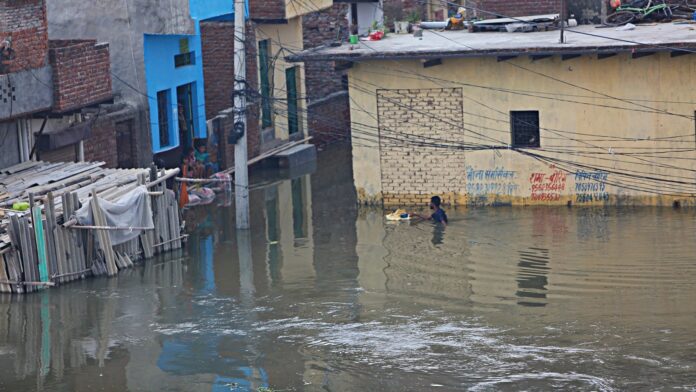The World Meteorological Organization (WMO) reported that Asia was the most disaster-prone region in 2023 due to climate and weather hazards, with floods and storms being the primary cause of casualties and economic losses. The WMO highlighted that global temperatures reached record highs last year, with Asia warming at an alarming rate.
Heatwaves in Asia have become increasingly severe, causing melting glaciers that threaten the region’s future water security. The WMO reported that Asia is warming faster than the global average, with temperatures in 2023 nearly two degrees Celsius above the 1961 to 1990 average.
Celeste Saulo, the WMO chief, described the report’s conclusions as “sobering,” emphasizing the severe impact of climate change on societies, economies, and the environment in the region. The WMO’s State of the Climate in Asia 2023 report highlighted the accelerating rate of key climate change indicators, such as surface temperature, glacier retreat, and sea-level rise, which will have serious repercussions for societies, economies, and ecosystems in the region.
The report revealed that Asia remained the world’s most disaster-hit region from weather, climate, and water-related hazards in 2023. The annual mean near-surface temperature over Asia in 2023 was the second-highest on record, at 0.91 degrees Celsius above the 1991-2020 average, and 1.87 degrees above the 1961-90 average.
Particularly high average temperatures were recorded in western Siberia, central Asia, eastern China, and Japan, with Japan experiencing its hottest summer on record. However, precipitation was below normal in the Himalayas and the Hindu Kush mountain range in Pakistan and Afghanistan. Southwest China also suffered from a drought, with below-normal precipitation levels in nearly every month of the last year.
The High-Mountain Asia region, centred on the Tibetan Plateau, contains the largest volume of ice outside of the polar regions. Most of these glaciers have been retreating over the last several decades, and at an accelerating rate. In 2023, 20 out of 22 monitored glaciers in the region showed continued mass loss.
The WMO emphasized the urgent need for national weather services across the region to improve tailored information to officials working on reducing disaster risks. The organization’s secretary-general, Celeste Saulo, stated, “It is imperative that our actions and strategies mirror the urgency of these times. Reducing greenhouse gas emissions and adapting to the evolving climate is not merely an option, but a fundamental necessity”5.


